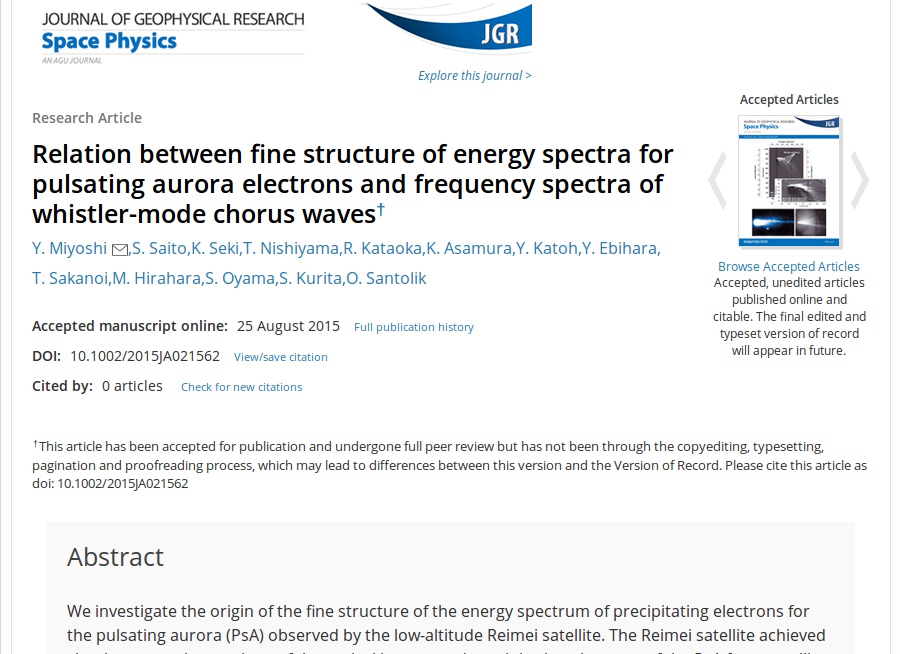
学会発表16 Oct 2017
Numerical calculations for flux enhancement of radiation belt electrons obser...
公表論文/

| 発表年月日 | 2015年9月30日 |
|---|---|
| 著者 | Y. Miyoshi, S. Saito, K. Seki, T. Nishiyama, R. Kataoka, K. Asamura, Y. Katoh, Y. Ebihara, T. Sakanoi, M. Hirahara, S. Oyama, S. Kurita, O. Santolik |
| 雑誌名 | Journal of Geophysical Research - Space Physics |
| 査読の有無 | 有 |
| 巻 | 120 |
| ページ | 1ページ〜9ページ |
| DOI | doi:10.1002/2015JA021562 |
| URL | http://onlinelibrary.wiley.com/doi/10.1002/2015JA021562/full |
We investigate the origin of the fine structure of the energy spectrum of precipitating electrons for the pulsating aurora (PsA) observed by the low-altitude Reimei satellite. The Reimei satellite achieved simultaneous observations of the optical images and precipitating electrons of the PsA from satellite altitude (~620 km) with resolution of 40 ms. The main modulation of precipitation, with a few seconds, and the internal modulations, with a few Hz, that are embedded inside the main modulations are identified above ~3 keV. Moreover, stable precipitations at ~1 keV are found for the PsA. A “precipitation gap” is discovered between two energy bands. We identify the origin of the fine structure of the energy spectrum for the precipitating electrons using the computer simulation on the wave particle interaction between electrons and chorus waves. The lower-band chorus (LBC) bursts cause the main modulation of energetic electrons, and the generation and collapse of the LBC bursts determines on–off switching of the PsA. A train of rising tone elements embedded in the LBC bursts drives the internal modulations. A close set of upper-band chorus (UBC) waves causes the stable precipitations at ~1 keV. We show that a wave power gap around the half-gyro frequency at the equatorial plane in the magnetosphere between LBC and UBC reduces the loss rate of electrons at the intermediate energy range, forming a gap of precipitating electrons in the ionosphere.
カテゴリー:公表論文